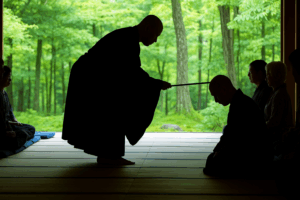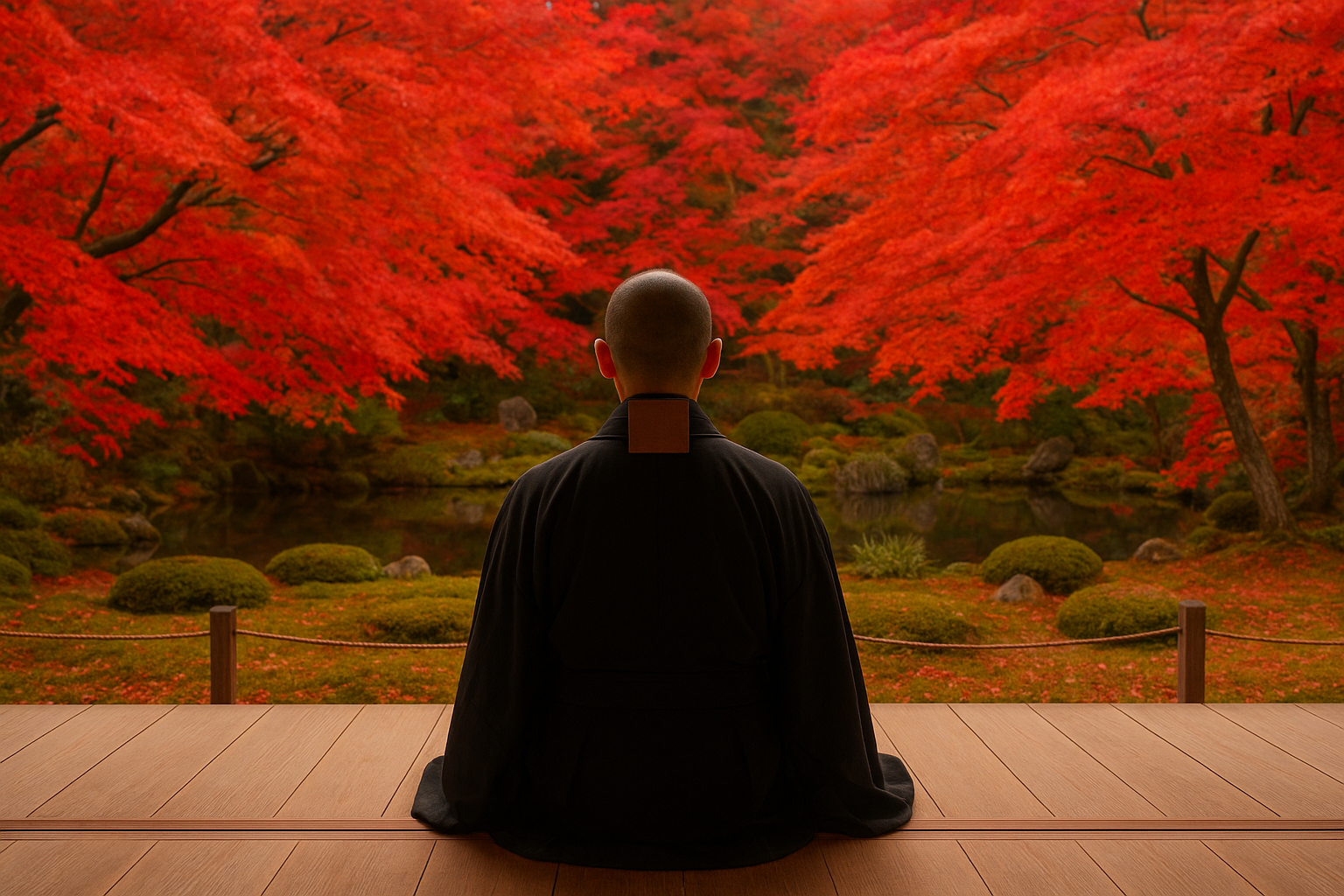Zazen — The State of “Nothingness” Found in Stillness
In our busy, fast-paced world, many of us have lost the moments when our hearts can truly rest. “Finding inner balance” has become one of the greatest challenges of modern life.
Endless tasks, constant notifications, and an overflow of information keep our minds running without pause — always thinking, deciding, and reacting.
Though we live in an age of comfort and abundance, many still feel a quiet sense of disconnection, as if they’ve lost sight of who they are amidst the rush.
In this climate, practices like meditation and mindfulness have quietly gained global attention.
By focusing on the breath and anchoring the mind in the present moment, these simple acts are now scientifically recognized to reduce stress, improve concentration, and promote emotional stability.

As modern life grows increasingly hectic, meditation and mindfulness are drawing global attention.
Yet long before the world discovered mindfulness, Japan had its own way of “cultivating the mind.”
That is zazen — seated meditation.
In zazen, one sits in silence, regulates the breath, and refrains from chasing thoughts, simply existing in the “now.”
While it shares similarities with modern mindfulness, zazen holds a deeper religious and philosophical dimension.
What Is Zazen?
Zazen is a fundamental practice of Buddhism, particularly central to Zen traditions.
In Japan, it is preserved mainly in the Sōtō and Rinzai schools, where practitioners sit quietly, adjust their breathing, and aim for a state of mu — “nothingness.”
The purpose of zazen is not to gain something, but rather to let go — of desires, attachments, and thoughts — until the mind becomes clear and empty.
It is not about forcing thoughts to stop, but observing them without judgment.
Thoughts arise, pass, and fade — all on their own.
As this awareness deepens, one realizes: it is not the world outside that disturbs the mind, but our own attachments within.
Anger, fear, desire — all are fleeting.

The aim of zazen is to release all desires and thoughts, allowing the mind to return to stillness.
Recognizing this changes how we see life itself.
When things don’t go as planned or when conflict arises, even a single calm breath can shift our perspective.
Zazen, then, is a practice of releasing the ego, freeing oneself from attachment, and returning to the quiet clarity that lies beneath.
The Origins and Transmission of Zazen
The roots of zazen trace back about 2,500 years to the Buddha, Shakyamuni.
Through deep meditation, he realized that “the cause of all suffering lies in attachment,” and attained a liberated state of mind. This meditative posture became the prototype of zazen.
From India, the Buddha’s teachings spread to China, where they evolved into Chan Buddhism — what would later be called Zen in Japan.
Chan emphasized direct experience over scripture, valuing personal realization through practice. Sitting meditation became its core.
Zen reached Japan during the Kamakura period.
Two figures — Eisai, who founded the Rinzai school, and Dōgen, founder of the Sōtō school — played key roles.
Rinzai Zen often employs kōan, paradoxical questions posed by a teacher to help the student transcend logical thinking and awaken insight — such as, “Does a dog have Buddha-nature?”
Through such inquiries, practitioners look deeply into their own consciousness.
Sōtō Zen, by contrast, teaches shikantaza — “just sitting.”
Dōgen taught that zazen itself is enlightenment — not a means to an end, but a complete expression of awakening.

To feel, rather than to know — that is the teaching of Zen.
Thus, zazen took root in Japan after evolving through centuries — from India to China to Japan — and continues today as a timeless way of self-reflection.
How Zazen Differs from Meditation and Mindfulness
In recent years, meditation and mindfulness have spread widely around the world, especially in the West.
They are practiced to ease stress, enhance focus, and bring mental clarity in workplaces, schools, and daily life.
Mindfulness encourages awareness of the present — of one’s breath, body sensations, and emotions — without judgment.
Its benefits are well-documented in scientific studies on mental health and emotional regulation.

The purpose of mindfulness is to simply observe yourself as you are in this present moment.
Zazen, however, goes beyond mindful awareness.
In mindfulness, one consciously observes; in zazen, even “the one who observes” is released.
Attention is given to the breath — yet without trying to control it.
The breath flows in and out naturally.
Thoughts and feelings come and go, but the practitioner simply watches them drift away.

Through zazen, one empties the mind and transcends the self, entering the realm of nothingness.
Eventually, the sense of “I am thinking” or “I am feeling” dissolves, leaving only the quiet presence of “sitting.”
There is no striving, no evaluation — only the pure experience of being alive within stillness.
Zazen, then, is not a tool for self-improvement.
It is a path of returning to one’s original, unclouded nature.
Every person, at their core, holds a calm and lucid mind.
Yet in daily life, this clarity is covered by layers of desire, anxiety, and distraction.
Through zazen, those layers are gently peeled away — not by adding, but by letting go.
What remains is mu — the state of “nothingness.”
Not a void, but a peaceful acceptance of all that is.
Beyond Silence
How often are we swept away by our own thoughts and emotions — regretting the past, worrying about the future, forgetting the present moment entirely?
Our minds are constantly moving, rarely still.
Zazen offers a pause — a moment to stop the current of thought and simply breathe.
In that stillness, what we discover is not some special enlightenment, but something profoundly familiar: the simple fact of our own existence.
Returning to that quiet awareness — to just being — may be what zazen is truly about.





コメント